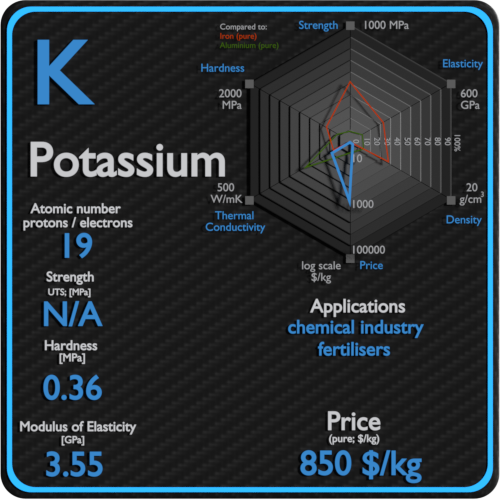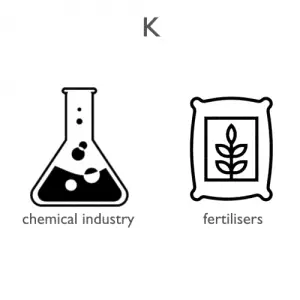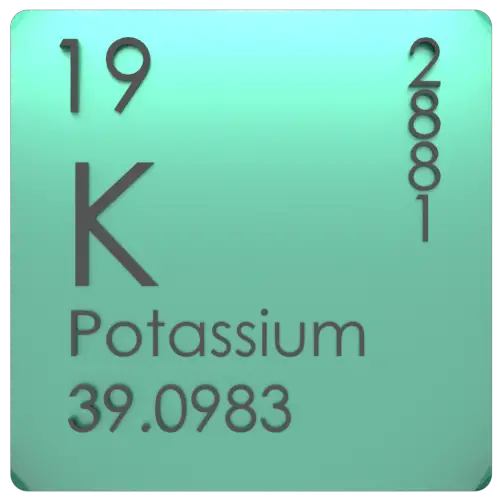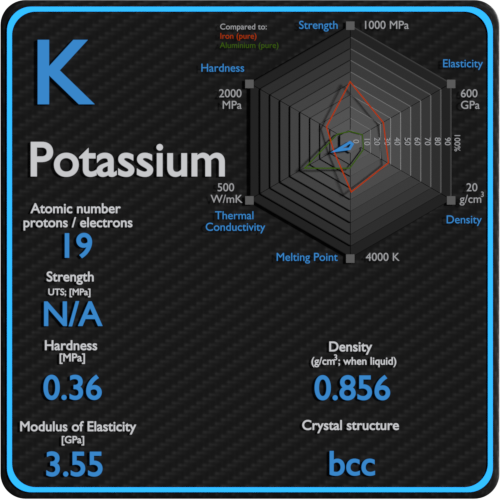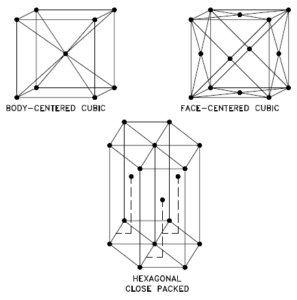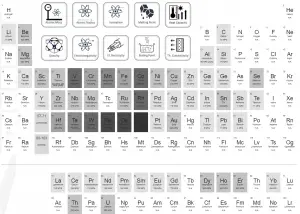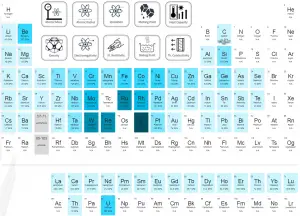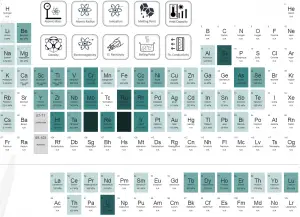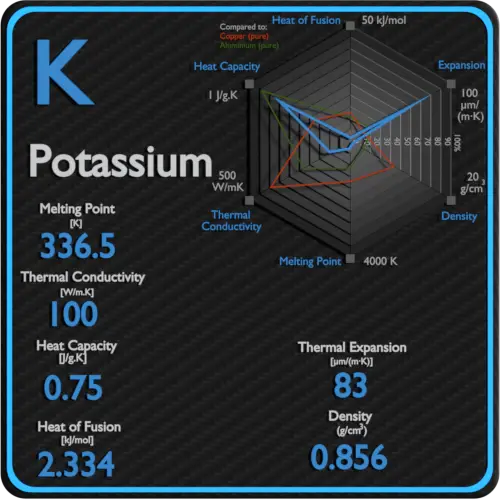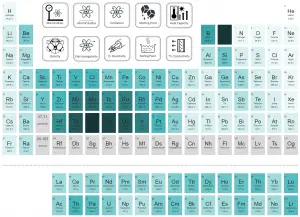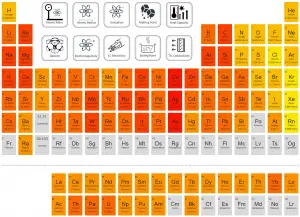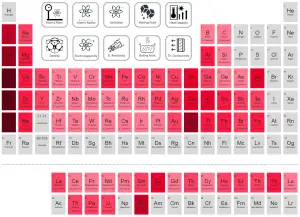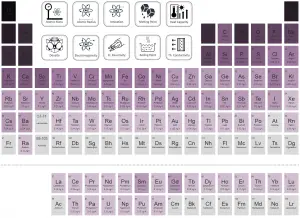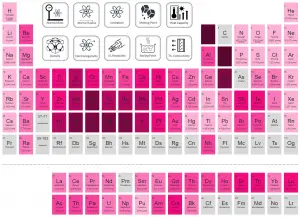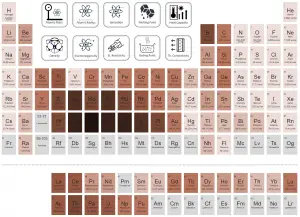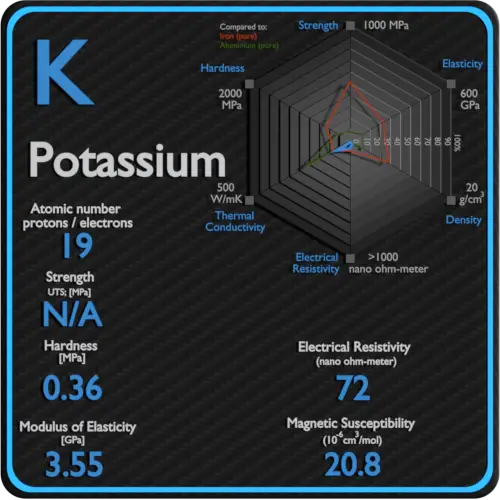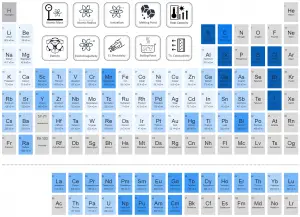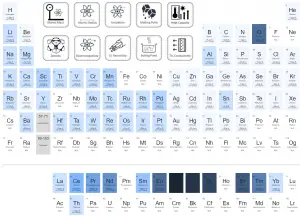About Potassium
Potassium was first isolated from potash, the ashes of plants, from which its name derives. In the periodic table, potassium is one of the alkali metals. All of the alkali metals have a single valence electron in the outer electron shell, which is easily removed to create an ion with a positive charge – a cation, which combines with anions to form salts. Naturally occurring potassium is composed of three isotopes, of which 40K is radioactive. Traces of 40K are found in all potassium, and it is the most common radioisotope in the human body.
Summary
| Element | Potassium |
| Atomic number | 19 |
| Element category | Alkali Metal |
| Phase at STP | Solid |
| Density | 0.856 g/cm3 |
| Ultimate Tensile Strength | N/A |
| Yield Strength | N/A |
| Young’s Modulus of Elasticity | 3.53 GPa |
| Mohs Scale | 0.4 |
| Brinell Hardness | 0.36 MPa |
| Vickers Hardness | N/A |
| Melting Point | 63.25 °C |
| Boiling Point | 760 °C |
| Thermal Conductivity | 102.4 W/mK |
| Thermal Expansion Coefficient | 83 µm/mK |
| Specific Heat | 0.75 J/g K |
| Heat of Fusion | 2.334 kJ/mol |
| Heat of Vaporization | 79.87 kJ/mol |
| Electrical resistivity [nanoOhm meter] | 72 |
| Magnetic Susceptibility | +20.8e-6 cm^3/mol |
Applications of Potassium
Potassium (K) is an essential nutrient for plant growth. It’s classified as a macronutrient because plants take up large quantities of K during their life cycle. Agricultural fertilizers consume 95% of global potassium chemical production, and about 90% of this potassium is supplied as KCl. Due to its high degree of reactivity, pure potassium is rarely used in its elemental /metallic form. It is used as a powerful reducing agent in organic chemistry. Potassium/Sodium alloys are It used as a heat exchange medium . The heat in the potassium warms water and makes it hot enough to boil. Then water is changed into steam, which is used to work devices that generate electricity.
Production and Price of Potassium
Raw materials prices change daily. They are primarily driven by supply, demand and energy prices. In 2019, prices of pure Potassium were at around 850 $/kg.
Potassium compounds can be extracted from the earth as it is found in many solids, soil and seawater. The earliest version known to man was potash, which could be easily obtained by simply burning a tree and gathering potash from the ashes. The principal source of potassium – potash – is mined in Canada, Russia, Belarus, Kazakhstan, Germany, Israel, United States, Jordan, and other places around the world.
Source: www.luciteria.com
Mechanical Properties of Potassium
Strength of Potassium
In mechanics of materials, the strength of a material is its ability to withstand an applied load without failure or plastic deformation. Strength of materials basically considers the relationship between the external loads applied to a material and the resulting deformation or change in material dimensions. In designing structures and machines, it is important to consider these factors, in order that the material selected will have adequate strength to resist applied loads or forces and retain its original shape. Strength of a material is its ability to withstand this applied load without failure or plastic deformation.
For tensile stress, the capacity of a material or structure to withstand loads tending to elongate is known as ultimate tensile strength (UTS). Yield strength or yield stress is the material property defined as the stress at which a material begins to deform plastically whereas yield point is the point where nonlinear (elastic + plastic) deformation begins.
See also: Strength of Materials
Ultimate Tensile Strength of Potassium
Ultimate tensile strength of Potassium is N/A.
Yield Strength of Potassium
Yield strength of Potassium is N/A.
Modulus of Elasticity of Potassium
The Young’s modulus of elasticity of Potassium is 3.53 GPa.
Hardness of Potassium
In materials science, hardness is the ability to withstand surface indentation (localized plastic deformation) and scratching. Brinell hardness test is one of indentation hardness tests, that has been developed for hardness testing. In Brinell tests, a hard, spherical indenter is forced under a specific load into the surface of the metal to be tested.
Brinell hardness of Potassium is approximately 0.36 MPa.
The Vickers hardness test method was developed by Robert L. Smith and George E. Sandland at Vickers Ltd as an alternative to the Brinell method to measure the hardness of materials. The Vickers hardness test method can be also used as a microhardness test method, which is mostly used for small parts, thin sections, or case depth work.
Vickers hardness of Potassium is approximately N/A.
Scratch hardness is the measure of how resistant a sample is to permanent plastic deformation due to friction from a sharp object. The most common scale for this qualitative test is Mohs scale, which is used in mineralogy. The Mohs scale of mineral hardness is based on the ability of one natural sample of mineral to scratch another mineral visibly.
Potassium is has a hardness of approximately 0.4.
See also: Hardness of Materials
Potassium – Crystal Structure
A possible crystal structure of Potassium is body-centered cubic structure.
In metals, and in many other solids, the atoms are arranged in regular arrays called crystals. A crystal lattice is a repeating pattern of mathematical points that extends throughout space. The forces of chemical bonding causes this repetition. It is this repeated pattern which control properties like strength, ductility, density, conductivity (property of conducting or transmitting heat, electricity, etc.), and shape. There are 14 general types of such patterns known as Bravais lattices.
See also: Crystal Structure of Materials
Crystal Structure of Potassium

Thermal Properties of Potassium
Potassium – Melting Point and Boiling Point
Melting point of Potassium is 63.25°C.
Boiling point of Potassium is 760°C.
Note that, these points are associated with the standard atmospheric pressure.
Potassium – Thermal Conductivity
Thermal conductivity of Potassium is 102.4 W/(m·K).
The heat transfer characteristics of a solid material are measured by a property called the thermal conductivity, k (or λ), measured in W/m.K. It is a measure of a substance’s ability to transfer heat through a material by conduction. Note that Fourier’s law applies for all matter, regardless of its state (solid, liquid, or gas), therefore, it is also defined for liquids and gases.
Coefficient of Thermal Expansion of Potassium
Linear thermal expansion coefficient of Potassium is 83 µm/(m·K)
Thermal expansion is generally the tendency of matter to change its dimensions in response to a change in temperature. It is usually expressed as a fractional change in length or volume per unit temperature change.
Potassium – Specific Heat, Latent Heat of Fusion, Latent Heat of Vaporization
Specific heat of Potassium is 0.75 J/g K.
Heat capacity is an extensive property of matter, meaning it is proportional to the size of the system. Heat capacity C has the unit of energy per degree or energy per kelvin. When expressing the same phenomenon as an intensive property, the heat capacity is divided by the amount of substance, mass, or volume, thus the quantity is independent of the size or extent of the sample.
Latent Heat of Fusion of Potassium is 2.334 kJ/mol.
Latent Heat of Vaporization of Potassium is 79.87 kJ/mol.
Latent heat is the amount of heat added to or removed from a substance to produce a change in phase. This energy breaks down the intermolecular attractive forces, and also must provide the energy necessary to expand the gas (the pΔV work). When latent heat is added, no temperature change occurs. The enthalpy of vaporization is a function of the pressure at which that transformation takes place.
Potassium – Electrical Resistivity – Magnetic Susceptibility
Electrical property refers to the response of a material to an applied electric field. One of the principal characteristics of materials is their ability (or lack of ability) to conduct electrical current. Indeed, materials are classified by this property, that is, they are divided into conductors, semiconductors, and nonconductors.
See also: Electrical Properties
Magnetic property refers to the response of a material to an applied magnetic field. The macroscopic magnetic properties of a material are a consequence of interactions between an external magnetic field and the magnetic dipole moments of the constituent atoms. Different materials react to the application of magnetic field differently.
See also: Magnetic Properties
Electrical Resistivity of Potassium
Electrical resistivity of Potassium is 72 nΩ⋅m.
Electrical conductivity and its converse, electrical resistivity, is a fundamental property of a material that quantifies how Potassium conducts the flow of electric current. Electrical conductivity or specific conductance is the reciprocal of electrical resistivity.
Magnetic Susceptibility of Potassium
Magnetic susceptibility of Potassium is +20.8e-6 cm^3/mol.
In electromagnetism, magnetic susceptibility is the measure of the magnetization of a substance. Magnetic susceptibility is a dimensionless proportionality factor that indicates the degree of magnetization of Potassium in response to an applied magnetic field.
